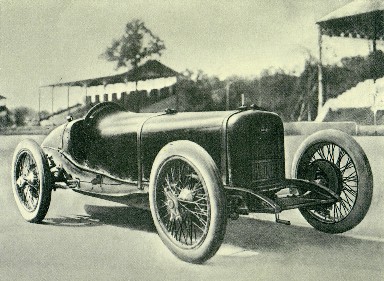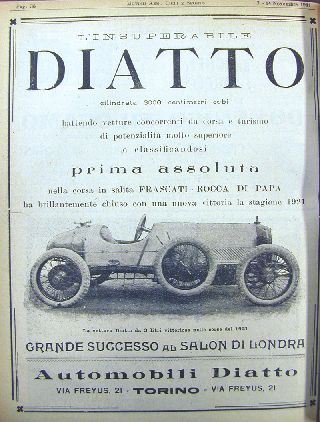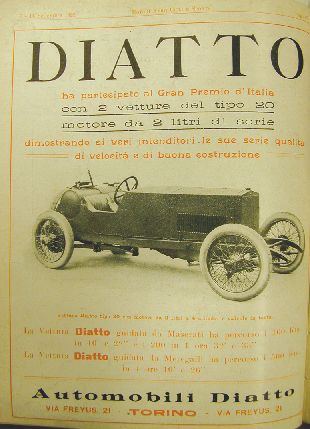DIATTO'S HISTORY
![]()
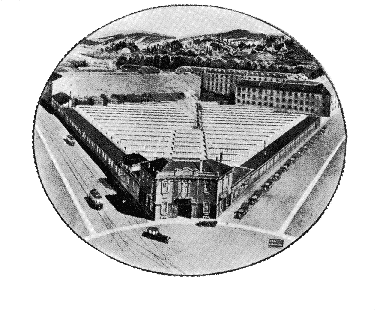 On 19 February 1819 King Vittorio Emanuele I proclaimed:
«... the city of Turin will be enlarged from the village of Po to the river
bank». The construction of piazza Vittorio - according to the wishes of Carlo
Felice - the
bridge and the Church of Gran Madre di Dio, inaugurated on 20 May 1831, gave a
new shape to the city, the fourth time the city had been enlarged.
On 19 February 1819 King Vittorio Emanuele I proclaimed:
«... the city of Turin will be enlarged from the village of Po to the river
bank». The construction of piazza Vittorio - according to the wishes of Carlo
Felice - the
bridge and the Church of Gran Madre di Dio, inaugurated on 20 May 1831, gave a
new shape to the city, the fourth time the city had been enlarged.
In 1835 a 30-year old wheelright by the name of Diatto,
from the nearby farming village of Carmagnola, settled in the city, leasing
from Count Francesco Gay a small strip of land on the right-hand bank of the
River Po, for the manufacture and repair of carriage wheels. This was the
beginning of what was to become a major auto manufacturer.
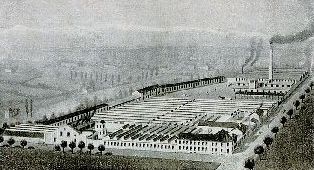
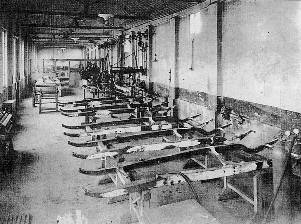
Vincenzo died, unmarried, on 10 August 1880, leaving his
property and assets to his mother, brothers and sisters. Four years later, on
14 September 1884, his brother Pietro died. For the sake of convenience the
manufacturing facilities were made over to the two remaining brothers.
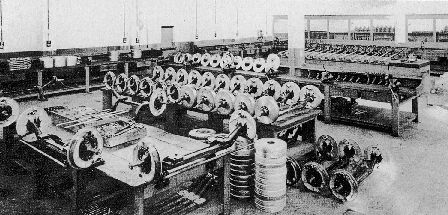
On 3 February 1909, in order to build a new bridge over
the Po, to be named after King Umberto I, assassinated in Monza, the Turin City
Council requisitioned part of the Diatto property. Since 1899 Diatto had been
buying up land in the Crocetta area; in 1912 the company bought the factory and
land owned by auto manufacturer Itala, the new corporate headquarters in via
Rivalta 15, Orbassano.
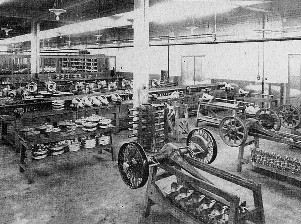
The company existed independently for 83 years, but the
name Diatto continued to be used in the auto industry due to the work of
Giovanni Battista Diatto’s sons Vittorio and Pietro (Guglielmo’s grandsons),
who stipulated an agreement on 12 April 1905 between their company - Ingegneri
Vittorio e Pietro Diatto-Fonde-rie Officine Meccaniche Costruzioni in Ferro -
and the Société des Établissements Adolphe Clément-Automobiles Bayard based in
Levallois Perret (Paris), for the manufacture of French automobiles under
license.
The new company was called Società Automobili Diatto-A. Clément with a share capital of Itl 1,500,000, of which Itl 450,000 was paid up, and duration until 30 September 1935. The company was based in Turin, with 25,000 square meters of facilities between via Fréjus, Cesana, Revello and Moretta: 90 HP of power was installed, supplied by 3 three-phase motors driving about 200 machine tools, for 500 workmen. Corporate headquarters was at via Fréjus 21.
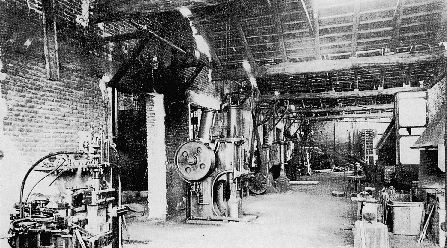
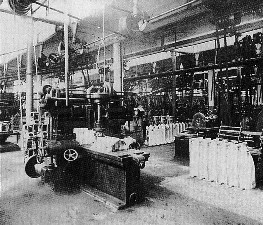
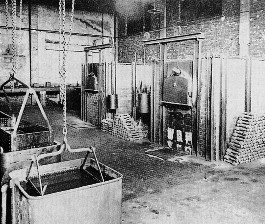
Italy was represented by an Itala driven by Prince
Scipione Borghese accompanied by the mechanic and co-driver Ettore Guizzardi,
and by the famous journalist Luigi Barzini, acting as correspondent for the Corriere
della Sera and Daily Telegraph. The Prince was a meticulous man; the car was
stripped down to remove anything not strictly necessary but still weighed in at
around 2 tons. The weight was useful on the many dirt roads along the route.
At 7.30 a.m. on 10 June 1907 Guizzardi turned the
crankshaft and started the engine. The race began at 8.00 a.m. The
first article written by Barzini was telegraphed from Hong Kong, after crossing
the Great Wall of China and the Gobi desert: it was the first telegram to be
sent from the Hong Kong office after 6 years of operation.
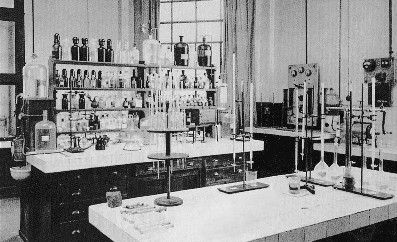
On 10 August, 60 days after starting off, the Itala
reached Paris after a journey of 10,000 miles from Peking, featuring the Gobi
desert, Baikal Lake, Omsk, the Urals, Novgorod, Moscow, St. Petersburg, Berlin,
Liege and finally Paris. This tough test for springs, suspension, the engine,
tyres and brakes, was a major success for the Italian auto industry.
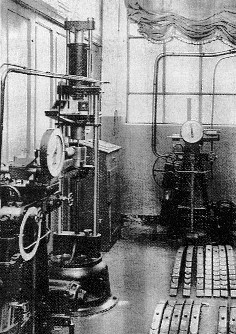
Diatto took note and prepared a car for the St.
Petersburg-Moscow race scheduled to start on 18 May 1908. 28 cars took part,
but only 9 reached the destination. The Diatto (number 25) driven by Primaversi
came home sixth. These race experiences influenced production, with heavy-duty
vehicles equipped with excellent braking systems. One example was the 4,846 cc
25/35 HP produced in 1907, with chain transmission (conventional Cardan
transmission from 1909). Although much more expensive than previous models (Itl
16,500), this car was enormously successful and was produced until 1910. On 30
June 1909, Vittorio and Pietro Diatto bought out the shares of Adolphe Clément,
changing the company name to Fonderie Officine Fréjus.
All new cars would have the famous oval Diatto badge on
the radiator, a logo that was used unchanged until the factory closed and still
famous throughout the motor racing world.
(It should be remembered that, despite the similarity
with the Bugatti logo, the oval Diatto logo was used from 1909 onwards and was
submitted to the patents office on 5 June 1919, pre-dating both the invention
of the Bugatti logo in 1911 and the registration on 1st May 1925).
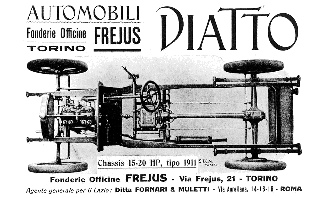 A few months after becoming a fully independent company,
the factory produced a new 4-cylinder 209 cc monoblock 15 HP engine, designed
entirely in-house. The engine was coupled to a 3-speed transmission plus
reverse.
A few months after becoming a fully independent company,
the factory produced a new 4-cylinder 209 cc monoblock 15 HP engine, designed
entirely in-house. The engine was coupled to a 3-speed transmission plus
reverse.
With the war in Libya, the Balkan conflict and the First
World War, the industrial revolution encouraged by Prime Minister Giolitti, was
given further impetus. The war required arms and vehicles. The first
reconnaissance planes and bombers were used in Libya. Machines became part of
everyday life, power and speed no longer being thought of as unnatural or
somehow devilish.
In mid-August 1905 Queen Margherita was the object of
this kind of superstition. Four shepherds in the mountains of the Aosta valley
saw her aboard the Sparviero, a convertible, followed by a second car, the
Allodola, with devilish rays from the front of the cars: they broke the
headlamps with stones and the car plummeted into a ditch, without falling
further. «It could have been a catastrophe» was the comment of Illustrazione
Italiana «but it was what we will come to call an accident». Margherita did not
move, just looked at the St. Christopher she kept with her at all times. On her
prompting, St. Christopher became the patron saint of motorists.
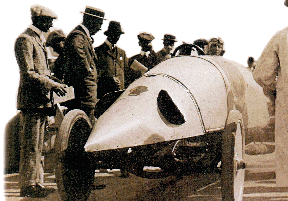 In 1908 the King’s car, on route from Racconigi to
Piacenza, took an unexpectedly tight corner and finished in a ditch; the
following year, near San Marino, perhaps after brake failure, 8 motorists from
Padova were killed; in 1910, on a French race track, the Turin racing driver
Giuppone, skidded off the track and was killed; three years later a powerful
car travelling near Savona collided with two oxen.
In 1908 the King’s car, on route from Racconigi to
Piacenza, took an unexpectedly tight corner and finished in a ditch; the
following year, near San Marino, perhaps after brake failure, 8 motorists from
Padova were killed; in 1910, on a French race track, the Turin racing driver
Giuppone, skidded off the track and was killed; three years later a powerful
car travelling near Savona collided with two oxen.
These accidents created a partially negative atmosphere
around the auto industry but did not prevent Diatto, in 1910, from arriving at
the Brooklands circuit in England with a highly aerodynamic racing car, powered
by a 15.9-litre aircraft engine - a clear indication of the ambitions of the auto
manufacturer. In 1911, Diatto began production of a new vehicle, the 16 HP
Unique Type with monoblock 2,212 cc engine and 3speed transmission.
In 1912 this model was transformed into a new 18 HP
Unique Type, now with 2,413 cc engine and 4-speed gearbox; until 1915 this
remained the standard car, with slight changes to front and rear width,
distance between wheels and overall weight.
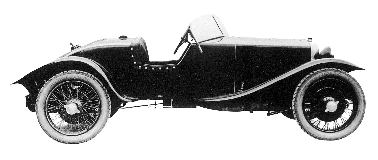 Diatto was one of the leading manufacturers on racing
circuits throughout this period. On 21 June 1914, Eugenio Silvani won a 4-lap
(160-mile) race in Tuscany on the San Pietro track from
Sieve-Scarperia-Giogo-Fiorenzuola-Passo della Futa-San Pietro and back to
Sieve. The outbreak of the First World War in Italy, in May 1915, removes the
last few reservations about the use of powerful engines, now used in the war
effort.
Diatto was one of the leading manufacturers on racing
circuits throughout this period. On 21 June 1914, Eugenio Silvani won a 4-lap
(160-mile) race in Tuscany on the San Pietro track from
Sieve-Scarperia-Giogo-Fiorenzuola-Passo della Futa-San Pietro and back to
Sieve. The outbreak of the First World War in Italy, in May 1915, removes the
last few reservations about the use of powerful engines, now used in the war
effort.
In October 1911 and January 1912, the poet Gabriele
D’Annunzio had praised the war in Libya publishing “Canzoni delle gesta
d’oltremare” in the Corriere della Sera, and in Paris, Marinetti’s “Guerra
igiene del mondo” (War, hygiene for the world) praised «... the formidable
symphonies of shrapnel and crazed sculptures created by our artillery in the
enemy camp». To create these “crazed sculptures” and to fly over Trento and
Vienna to drop propaganda leaflets, industry was required to produce aircraft
and support vehicles.
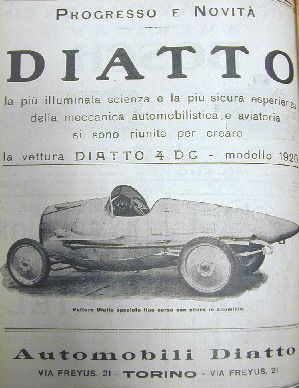
The war helped convince Italy that automobiles were here
to stay; this was strengthened by the mountain terrain and shape of the
peninsula which made railway building more difficult than in other countries.
Road building went ahead quickly. In 1910 62 private companies managed 1,875
miles of road; in 1912 this had gone up to 5,235 miles, and on 30 June 1914 it
was 7,344. Immediately after the armistice a further 200 licenses were given
for the construction of 3,750 more miles, with petrol stations selling
subsidized petrol below the market price. In 1924 Italy had a total of 33,000
miles of main and B roads, with GT routes and seasonal services for spa towns
and health resorts.
In 1915 Diatto began production of light trucks,
converting its standard frames to military use. These trucks proved to be strong
and reliable. During the same year, a new body shop was inaugurated in via
Moretta, Turin, and two new factories were acquired from John Newton in Turin
and from Scacchi in Chivasso.
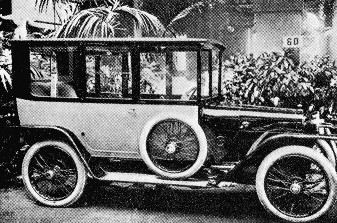
In 1916 Enzo Ferrari and his brother Alfredo bought a red
Diatto which he described in his memoires: «Alfredo volunteered for the war; it
was the time Red Cross volunteers were taken if they had some kind of vehicle.
The red 4-cylinder Diatto Torpedo we had bought went with him, to transport the
wounded from the front to hospitals».
The war changed the working class. In July 1915 Critica
Sociale (Social Criticism), the socialist magazine founded and directed by
Filippo Turati, denounced the psychological damage of workmen producing
entirely for destructive purposes for many years. «What will the consequences
be» he wondered, «for the economy and finances after the War?». The War was
gearing the mechanical engineering industry up to huge profits based on
estimates for old, badly organized artillery workshops which had now been
converted into standard production lines, with a fraction of the cost.
Management chose this moment to challenge the proletarian movement.
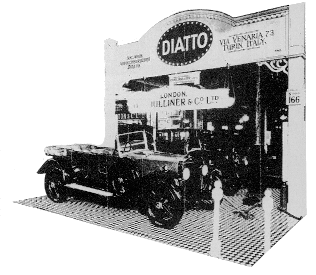 Fiat, one of the largest producers of war equipment,
returned profits of 80% of turnover, leading to a sevenfold increase in share
capital and a tenfold increase in the number of employees.
Fiat, one of the largest producers of war equipment,
returned profits of 80% of turnover, leading to a sevenfold increase in share
capital and a tenfold increase in the number of employees.
At the end of the War, Diatto underwent a new change,
becoming Società Anonima Fonderie Officine Fréjus Automobili Diatto (a
joint-stock company) in 1918. The following year, its name was changed again,
to Società Anonima Automobili Diatto, with a new organisation and new corporate
headquarters in Rome (only in 1920), closer to the source of a credit of Itl 6
million (the equivalent today of Itl 300 bn) owed by the State for war
equipment manufactured by Gnome et Rhône; this debt was never settled, creating
negative repercussions throughout industry.
European factories, hit by the unexpectedly difficult
conversion to a peace time footing, also faced a chronic shortage of money and
government policy which continued to regard automobiles as useless - perhaps
even damaging - luxuries, with narrow roads and asphalt surfaces suited to no
more than 20-30 mph, partly enhanced by the aristocratic image of the
automobile, the favourite playthings of Dukes, Princes, and members of the
Royal Family.
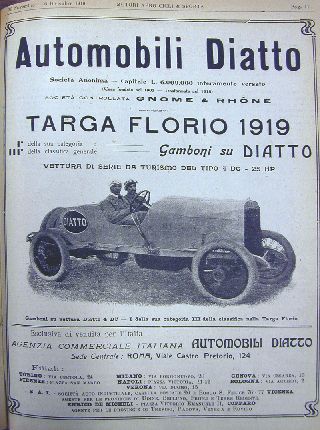
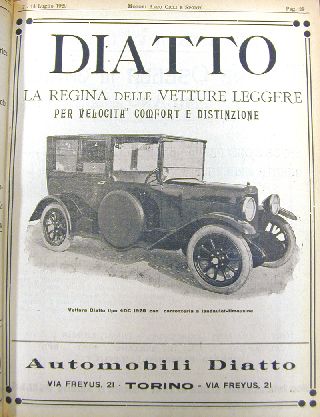
In 1928 the German auto manufacturer Ferdinand Porsche
spoke in less than friendly terms of aristocratics: «they talk about democracy
but they want luxury cars».
Three years were to pass before the first Volkswagen, the
“dream car” as it was called in September 1931 by Porsche, and a further three
years went by before the first Balilla. Three years may not be much, but they
were enough to finally rid the world of the idea of motor cars as playthings
and to create the utility car for the masses.
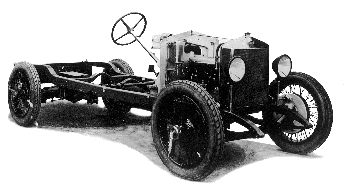 Diatto had just been waiting for the moment. In 1919 it
had produced three new car based on this concept: the 30 Type, on license from
Bugatti, with a 1,452 cc engine with valves and overhead camshaft, the 10 HP
Type with 1,018 cc engine and 3-speed gearbox with reverse, an early attempt to
produce a utility car, and the model 25 HP 4 DA e 4 DC produced in the Gnome et
Rhône factories, with 2,724 cc engine, produced until 1922 with a slight change
to the distance between the wheels.
Diatto had just been waiting for the moment. In 1919 it
had produced three new car based on this concept: the 30 Type, on license from
Bugatti, with a 1,452 cc engine with valves and overhead camshaft, the 10 HP
Type with 1,018 cc engine and 3-speed gearbox with reverse, an early attempt to
produce a utility car, and the model 25 HP 4 DA e 4 DC produced in the Gnome et
Rhône factories, with 2,724 cc engine, produced until 1922 with a slight change
to the distance between the wheels.
On 13 June 1920 a 6-lap race was held at the Mugello, in Tuscany, covering a total of 245 miles. 24 cars started the race; 5 finished. Augusto Tarabusi came second in a Diatto, with average speed of close to 40 mph, behind Giuseppe Campari, driving an Alfa Romeo. On 20 October the 11th Targa Florio race was held on the same track as the year before: 4 laps of the medium circuit of Madonie, 270 miles; Peter de Paolo and Peyron took part with their Diatto.
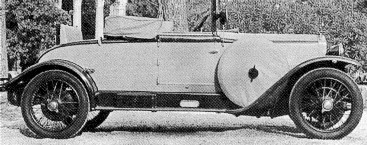
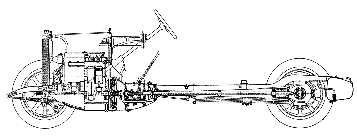 The situation was extremely serious: «Anyone at that
time», wrote the historian Morandi «who looked towards the Giovi pass, down the
valley towards Polcevera and further afield, Voltri and Sestri, would have seen
the red flags of the proletariat on the rooftops of factories. The same could
be said for Lecco, seen from Resegone, and Greco milanese, towards Mirafiori,
and in Biella and Brescia». The Prime Minister Giolitti waited and the
occupation of the factories burnt out on its own.
The situation was extremely serious: «Anyone at that
time», wrote the historian Morandi «who looked towards the Giovi pass, down the
valley towards Polcevera and further afield, Voltri and Sestri, would have seen
the red flags of the proletariat on the rooftops of factories. The same could
be said for Lecco, seen from Resegone, and Greco milanese, towards Mirafiori,
and in Biella and Brescia». The Prime Minister Giolitti waited and the
occupation of the factories burnt out on its own.
In 1921 the 4 DS, a modified version of the 4 DC, with
sports car performance and a top speed of over 90 mph, continued the company’s
racing interests. In 1921 Diatto decided to move corporate headquarters back to
Turin; the company also dedicated more attention to motor racing and set up its
own racing team. Share capital was increased to Itl 10,000,000, a huge figure
for the time, enabling Diatto to acquire a number of new short-term projects.
In 1922, Giuseppe Coda became Technical Director, after winding up his own
business, Veltro Società Automobili, after only a few months. He brought Diatto
the company’s idea for a new 2-litre engine, used for the Diatto 20 Type.
Together with the 20 S Type, this car was enormously successful on race tracks,
winning with champions such as Tazio Nuvolari, Antonio Ascari, Diego De
Sterlich, Emilio Materassi, Baroness Avanzo, Alfieri and Ernesto Maserati,
Gastone Brilli Peri, Giulio Aymini, Tarabusi, Ghia, Cesare Schieppati and
others.
The engine was slightly under 2 litres (1,995 cc), with 4
cylinders in a single block of cast iron with inserted head housing three
supports for the camshaft controlling the interchangeable valves by rocker
arms. The engine was silenced by equalisers on the camshaft, controlled by a
vertical shaft with helical gears, also controlling the water pump, magnet,
cooling fan and dynamo. The oil pump was fitted to the gear shaft and provided
oil under pressure. A high voltage magnet was used for ignition, with manual
control on the steering wheel.
The carburettor was automatic, with pedal or manual
control. Cooling was by water pump with radiator fan. The clutch was dry and
had only one disc, with a series of springs on the disc thrust device.
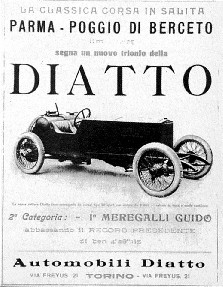 The four-speed gearbox had a trains balladeurs reverse gear.
A shaft transmission was used, with single universal joint and rear torque with
spiral Grearson teeth. The back end was in stamped steel. Braking was on all
four wheels, with the handbrake applied to the rear wheels or the gearbox
pulley. The frame was in C type 3 mm steel profile with rigid axis suspension
with half-elliptic spring.
The four-speed gearbox had a trains balladeurs reverse gear.
A shaft transmission was used, with single universal joint and rear torque with
spiral Grearson teeth. The back end was in stamped steel. Braking was on all
four wheels, with the handbrake applied to the rear wheels or the gearbox
pulley. The frame was in C type 3 mm steel profile with rigid axis suspension
with half-elliptic spring.
The Diatto 20, designed by Engineer Coda, was presented
at the 1922 Milan Exhibition just before beginning close co-operation with the
Maserati brothers, test drivers of the legendary 20 S.
To get the car ready for Monza, Alfieri and Ernesto
Maserati moved to Turin. The 20 S was a modern, reliable and particularly;
driven by Meregalli, it was placed high up the field at the 13th Targa Florio
on 2 April 1922, winning the Parma-Poggio di Berceto on 14 May. Two Diatto 20 S
started the Italian Grand Prix in 1922. Meregalli was a frequent winner of the
tough Garda race, first with the standard 20 and then with the customised 20 S.
Alfieri Maserati won the Autumn Grand Prix in Monza with a 3-litre car.
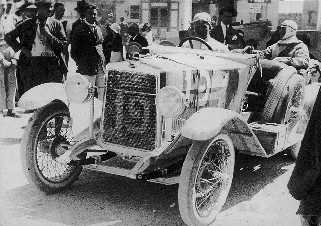
In August 1923 the Alpine Cup hosted the writer and
journalist Arnaldo Fraccaroli who later published his memoir of the event,
co-authored with Sonzogno, a literary event which helped to popularise motor
racing, just as Luigi Barzini had done with his coverage of the 1907
Peking-Paris rally. Fraccaroli’s diary focuses less on speed than on endurance.
The mountain route included many places made famous or infamous by the War:
Saga, Caporetto, Tomino, the Isonzo river, the Carso in Istria; people from
Fiume waved, the Croatians did not wave. Drivers started out at around 4.00
a.m. and covered a distance of over 300 miles a day, in the heat and dust, up
to a height of around 8,000 feet. In Tione they received a bunch of flowers,
Italian flag and a plaque reading «for the courageous drivers on behalf of the
most patriotic valley in the Trentino». 44 drivers started the rally, with only
24 finishing. Diatto was represented by no less than 4 competitors, each of
whom obtained a good final placing.
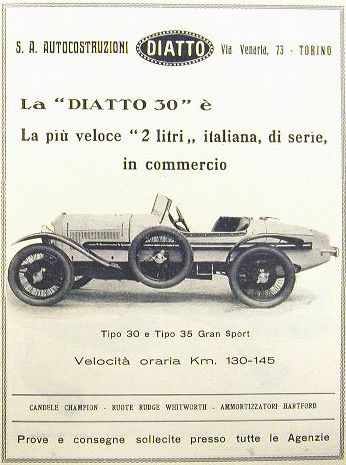
The cylinder head was made of aluminium, with inserted
steel caps. The cylinder block, in aluminium, had screwed-in steel liners. The
connecting rods were tubular, with two overhead camshafts controlled by
cylindrical gears. The first tests were carried out with atmospheric feed and
two or four bronze Zenith carburettors, of 16 diameter. The engine weighed 156
kg (about 343 lb.). The engine was fitted to a 20 S Type frame and won the
Parma-Poggio di Berceto with Alfieri Maserati. Subsequently a Roots compressor
was fitted with two pressurized Memini carburettors downstream of the
compressor. A special mix of fuel, with Avio petrol and a small quantity of
benzol, was used to deliver close to 150 HP. At the same time the company was
developing the 1,995 cc 30 Type, with strong 4-cylinder engine, overhead
camshaft, valves and axles, delivering 52 HP and a top speed of over 70 mph.
The car was produced successfully until 1927, when it was replaced with the 26 Type.
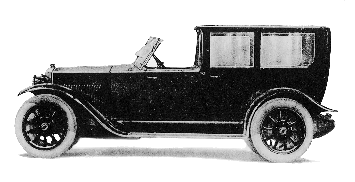 At the 24-hour Le Mans in 1925, Diatto entered four cars,
two 25 Type and two 30 Type, winning the 2litre category with the Garcia-Botta
team, which also qualified for the prestigious Rudge Whitworth Cup (a 2-yearly
event). The 20 S driven by François Lecot won at Limonest. On 6 September 1925,
Diatto debuted with the 8-cylinder engine was driven by the impetuous Tuscan
Emilio Materassi who died three years later on the same Monza circuit, driving
a Talbot. 27 spectators were also killed in the most serious accident ever at
Monza. The new Diatto Grand Prix had a successful debut in terms of speed and
agility but failed on reliability, forcing Materassi out of the race, probably
due to the lack of time to properly test and fine-tune the engine.
At the 24-hour Le Mans in 1925, Diatto entered four cars,
two 25 Type and two 30 Type, winning the 2litre category with the Garcia-Botta
team, which also qualified for the prestigious Rudge Whitworth Cup (a 2-yearly
event). The 20 S driven by François Lecot won at Limonest. On 6 September 1925,
Diatto debuted with the 8-cylinder engine was driven by the impetuous Tuscan
Emilio Materassi who died three years later on the same Monza circuit, driving
a Talbot. 27 spectators were also killed in the most serious accident ever at
Monza. The new Diatto Grand Prix had a successful debut in terms of speed and
agility but failed on reliability, forcing Materassi out of the race, probably
due to the lack of time to properly test and fine-tune the engine.
The huge development cost of the car and its failure to
clinch a top place led managers at Diatto into a period of rethinking,
strengthened by the financial problems of the Musso brothers - new and
important partners at Diatto and their textile businesses.
The work force continued to hope and produced a new
model, the 35 Type, quite similar to the 25 Type, both with a 4-cylinder 2,952
cc engine with valves and axles on overhead camshafts, the former producing 75
HP and a top speed of 85 mph, the latter 70 HP and a top speed of nearly 80
mph.
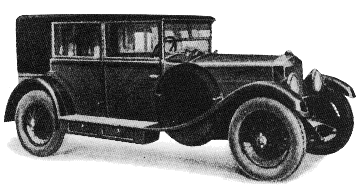 On 21 September 1926 Giulio Aymini won the
Susa-Moncenisio with an 20 S, establish a new record for the class. In 1927 a
Diatto 30 came first in the 2,000 cc class and sixth overall at the Brooklands
6-hour race. In 1927, two experimental cars were prepared for the Mille Miglia,
with 2-litre 8-cylinder engines and compressor, producing 160 HP and a top
speed of over 135 mph! The Mille Miglia was the showcase the Fascist regime
intended to use to attract world attention to Italy.
On 21 September 1926 Giulio Aymini won the
Susa-Moncenisio with an 20 S, establish a new record for the class. In 1927 a
Diatto 30 came first in the 2,000 cc class and sixth overall at the Brooklands
6-hour race. In 1927, two experimental cars were prepared for the Mille Miglia,
with 2-litre 8-cylinder engines and compressor, producing 160 HP and a top
speed of over 135 mph! The Mille Miglia was the showcase the Fascist regime
intended to use to attract world attention to Italy.
As Gioventù Fascista (Fascist Youth) wrote: «... the
roads have been so well restored by Fascism, that it is now possible to drive
through half Italy and back in one stage, at an average speed of 110 kph (68.75
mph)». The same writer added: «... in Italy the discipline brought by Fascism
is so deeply rooted that 1,700 km of roads are open to traffic, day and night,
in cities and the countryside, so that there are hundreds of speedy vehicles on
the road at one time and no accidents occur». Hence «... Fascist Italy is a
breeding ground of energy, science, engineering, work, organisation, sport».
The Mille Miglia became one of the world’s foremost sporting events until the
tragic accident which killed Alfonso De Portago in 1957, the last year of the
race.
In 1927, Diatto took part with four 4-overhead valve and
two experimental 8-cylinder engines. In the same year the company launched the
new 2,632 cc 26 Type, producing 70 HP and a top speed of 87.5 mph. This was the
last mass production car manufactured by Diatto, which hit a new financial
crisis and went into voluntary receivership in 1931.
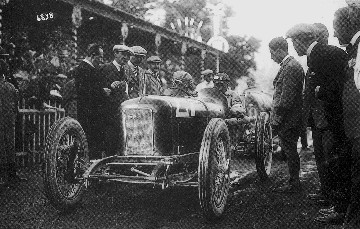
The first half of 1929 was more generous with good news,
at least seemingly: in February a new agreement was made between the Italian
state and the Roman Catholic Church, a victory for Mussolini; the agreement was
ratified by a form of referendum on 24 March. Tight monetary controls, as
announced by Benito Mussolini in Pesaro on 18 August 1926, were relaxed, only
to run into the Wall Street crash in October, the Great Depression and
consequent world recession. Credit protection was granted to Diatto on 29
October 1931; the following year, Carlino Sasso, the company’s Technical Director,
took over the business, rescuing it by good management and the focussing of
activities on spare parts for Diatto cars no longer in production, and the
manufacture of generating sets, compressors, pumps and pneumatic drills.
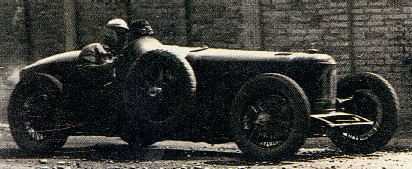 Mass production was beginning to rule the world, and cars
were becoming the opium of the masses at a time of worldwide recession and
sinister political developments in Europe. In 1930 Italo Balbo took 12
mass-produced hydroplanes over 6,000 miles from Orbetello to Rio de Janeiro.
Mass production was beginning to rule the world, and cars
were becoming the opium of the masses at a time of worldwide recession and
sinister political developments in Europe. In 1930 Italo Balbo took 12
mass-produced hydroplanes over 6,000 miles from Orbetello to Rio de Janeiro.
Cinemas became a popular form of entertainment. People
went on holiday in huge numbers, trains became a common sight; in January 1930
Prince Umberto married Maria Josè and the event was followed by Italy’s press
for the first time; on 24 April Galeazzo Ciano married Mussolini’s daughter
Edda, and a whole generation of women with the same name was born.
Diatto had ten relatively prosperous years in spare part and component manufacture while some gentlemen drivers continued to race, confident that spare parts would always be available. This was followed by the years of the war.
